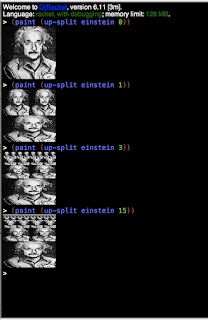Exercise 2.42. Figure 2.8: A solution to the eight-queens puzzle. The ``eight-queens puzzle'' asks how to place eight queens on a chessboard so that no queen is in check from any other (i.e., no two queens are in the same row, column, or diagonal). One possible solution is shown in figure 2.8 . One way to solve the puzzle is to work across the board, placing a queen in each column. Once we have placed k - 1 queens, we must place the k th queen in a position where it does not check any of the queens already on the board. We can formulate this approach recursively: Assume that we have already generated the sequence of all possible ways to place k - 1 queens in the first k - 1 columns of the board. For each of these ways, generate an extended set of positions by placing a queen in each row of the k th column. Now filter these, keeping only the positions for which the queen in the k th column is safe with respect to the other queens. This produces the s

